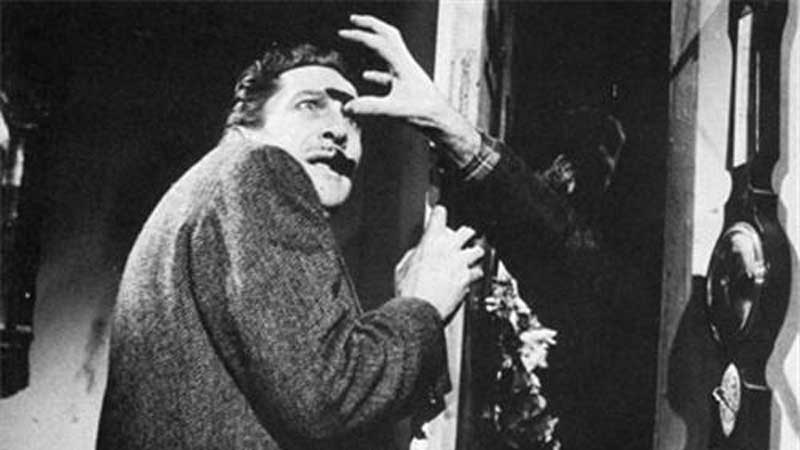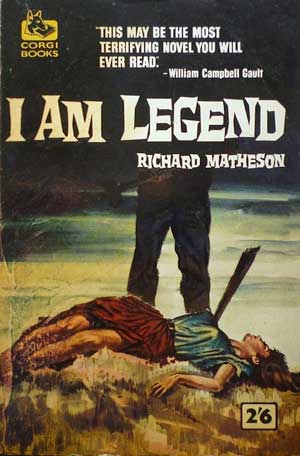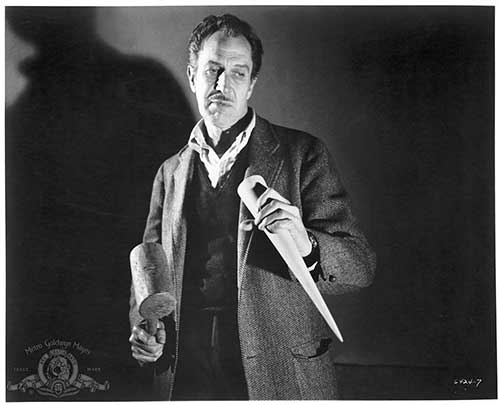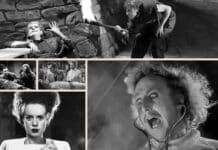PETER FULLER tells us some interesting facts about The Last Man on Earth (1964) with Vincent Price
In 1961, after finishing filming on the Jules Verne adventure, Master of World, Vincent Price left the US for Rome in Italy with his wife Mary to star in three films.
These films were shot back to back: Nerfetiti, Queen of the Nile, with his Leave Her to Heaven co-star Jeanne Crain; Gordon, The Black Pirate (aka Rage of the Buccaneers) with Ricardo Montalban; and the black and white sci-fi The Last Man on Earth.
Price plays scientist Robert Morgan, the last known survivor of an unknown global pandemic, which has turned its victims, including a former colleague Ben, into the living dead.

By night, the dead rise to torment him, while by day, he dispatches the fiends by driving stakes through their hearts.
After encountering another survivor, Ruth, Morgan attempts to cure her with a blood transfusion, only to discover that she is a spy sent by the contaminated community who, seeing him as a threat, plan to execute him…
Despite its low budget, The Last Man on Earth is a haunting, atmospheric post-apocalyptic sci-fi and one of Price’s most memorable European-made films.
Here are 15 things you might not know about the cult classic…
1.) UK viewers had to wait a long time to see the film originally.
The Last Man on Earth was released in the US on 7 May 1964 (in a double bill with Circus of Horrors), and got its Italian premiere on 19 August 1964, under the title L’ultimo uomo della terra.
In the UK, however, filmgoers had to wait until December 1966 to see the sci-fi.
2.) It was penned by Richard Matheson.
The film is based on I Am Legend, the American fantasy author’s debut novel, for which he was paid a $3000 advance from Gold Medal Books.
Published in 1954, it was the first modern vampire novel and was later filmed as The Omega Man, with Charlton Heston, in 1971 and as I Am Legend, starring Will Smith, in 2007.
Of the three versions, The Last Man on Earth, is the only one that stays true to Matheson’s novel.
3.) It could have been a Hammer film called The Night Creatures.
Following the success The Quatermass Xperiment (aka The Creeping Unknown) in 1955, Hammer Films paid Richard Matheson $10,000 to adapt his novel for the British studio, with Val Guest, lined up to direct.

However, the British censors turned the script down fearing it would be too graphic. Hammer, however, kept the title rights and later used it for their 1962 period adventure Captain Clegg.
You can read more about I Am Legend – Hammer Style here.
4.) It ended up B-movie producer Robert L Lippert.
In 1959, Robert Lippert intended on filming Matheson’s script as Naked Terror with the legendary Fritz Lang directing.
After securing a co-production deal with Produzioni La Regina in Rome, the parent company 20th Century Fox retitled it, The Last Man on Earth, and Sidney Salkow (who was no Lang) was assigned to direct, along with Ubaldo Regino.
5.) Naked Terror is such a good title.
Not wanting to waste a good title, Lippert ended up using it for a shockumentary about Zulu tribal practices for exploitation producer Joseph Brenner.
It was narrated by… Vincent Price.
The film, however, has not been seen since its release in August 1961.
6.) Matheson hated Lippert’s script.
Despite the script closely following his novel, Matheson was so upset by the rewrites he ended up taking his name off the credits and used the pseudonym, Logan Swanson.
7.) Vincent Price got a long holiday in Rome.
At the end of his first contract with American International Pictures, Price’s three-picture deal in Italy gave him and his wife Mary a long stay in one of their favourite cities, where they got to ‘dig around the ruins and art troves’.
8) It was of one of Vincent Price’s most underrated performances.
Matheson’s character in the novel is a thirty-something factory worker called Robert Neville.
The film turns the character into a fifty-something scientist called Robert Morgan.

It’s a much better fit for sophisticate Price who, looking very shabby indeed in a soiled suit, lends his WASP-ish intellectual a subtle sense of restrained dignity.
It also helps to emphasise his character’s displacement in the new world order, and this is echoed in his dying words: “Freaks!”
9.) Isn’t it supposed to be set in Los Angeles?
One of the problems with the film is that it pretends to be set in Los Angeles, but the landscape is unmistakably the outskirts of Rome.
Cinematographer Franco Delli Colli, however, ended up giving the film an effectively stark and eerie look by shooting the film’s exteriors in the early hours on deserted streets – while also keeping an eye out for the police.
10.) It was shot in the dead of winter.
And Vincent Price hated every second of it.
“I never was so cold in my life as I was in that picture. I had a driver, and I used to tip him a big sum to keep the car running so I could change my clothes in the backseat,” recalled the actor at the 1990 Fangoria Weekend of Horrors.
11.) The Last Man on Earth was filmed at Titanus Studios.
The 100-year-old family-run studio, established by Gustavo Lombardo, is as much a part of world cinema history as the famed Cinecittà.
Today it serves as a television production facility, while a museum dedicated the studio can be found in Torino.
12.) An icon of Italian Fascist architecture also features.
In one scene, Price’s Morgan climbs the steps of the Palazzo della Civiltà Italiana in the EUR district of Rome.
Also known as the Square Colosseum, it was constructed in 1935 by Mussolini for his planned 1942 world exhibition.
Today, the building serves as the headquarters for the fashion label Fendi.
13.) The soundtrack is pretty cool, too!
The film’s music was composed by Paul Sawtell and Bert Shefter, one of the most successful co-composer teams in film music in the late 1950s and early 1960s.
They were best known for genre fare like The Black Scorpion and The Fly, as well as the theme tune for the 1960s TV show Voyage to the Bottom of the Sea.
The music here is actually lifted and reworked from their 1959 score for Return of the Fly.
14.) It inspired George A Romero’s Night of the Living Dead.
Romero freely admits he ‘ripped-off’ Matheson’s novel for his groundbreaking 1968 zombie horror film, while the film’s shuffling, pale-faced zombies and nighttime scenes of the undead hordes battering down Morgan’s door were also a big visual influence.
15.) It’s not in the public domain.
Despite popping up all over the internet and appearing on scores of DVD collections in questionable-looking prints (there’s even a colourised version available), MGM owns the film rights.
A digitally remastered widescreen print was officially released on DVD in 2005.









